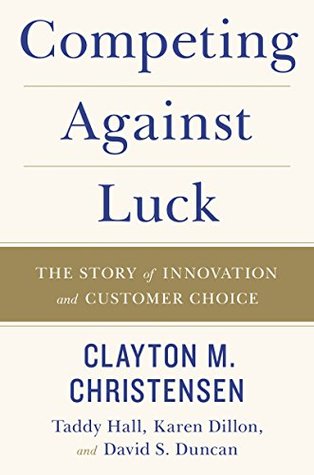More on this book
Community
Kindle Notes & Highlights
When managers are focused on the customer’s Job to Be Done, they not only have a very clear compass heading for their innovation efforts but they also have a vital organizing principle for their internal structure.
This was only possible by the realization that the hospital’s preexisting processes were failing to deliver desired patient experiences—in
The conversation focused on the organization’s Job to Be Done, but everyone was invited to bring their expertise and opinions on how best to solve it with the issues at hand
If you didn’t focus around a Job to Be Done, then you focused on the scars. You’d just sit there and argue with each other and get nothing done.
Jobs Theory changes not only what you optimize your processes to do, but also how you measure their success.
externally relevant customer-benefit metrics.
The end goal is getting the customers’ jobs done—everything works backward from there.
process optimization relates to efficiency.
that optimization should also incorporate a factor for job alignment—otherwise you’re focusing on getting better and better at the wrong things.
This is the source of your competitive advantage. Your processes have to get better and better, based on what you’re learning. And all of it has to align with the job your customers are hiring you to do.”
What OnStar built in its first years was not a product that competitors couldn’t copy, but a set of experiences and processes that perfectly aligned with customers’ Jobs to Be Done.
Ford’s core mistake—of focusing on the product spec rather than the job spec—
Stack fallacy highlights the tendency of engineers to overweight the value of their own technology and underweight the downstream applications of that technology to solve customer problems and enable desired progress.
Knowledge of production, Sharma says, is not the same thing as knowing what customers are looking for.
The high-stakes consequence is to dismiss the specific customer application as trivial when it is, in fact, essential.
By contrast, Huber and his team maintained clear focus on the Job to Be Done.
By their very nature, processes are set so that employees perform tasks in a consistent way, time after time.
When processes are organized around the customer’s Job to Be Done—optimized to facilitate the progress and deliver the experiences that customers seek—processes are the source of competitive advantage.
Delivering a complete set of experiences to nail the job usually requires that new processes be deliberately defined,
drive job-centric process development and integration is to measure and manage to new metrics aligned with nailing the customer’s job.
Managers should ask what elements of the experience are the most critical to the customer, and define metrics that track performance against them.
When seen through a Jobs lens, V8 need not compete against Diet Coke and cappuccino. It can compete against vegetables!
“because they assumed themselves to be in the railroad business rather than in the transportation business.”
In other words, the railroads fell into the trap of letting the product define the market they were in, rather than the job
Making meaning out of the jumble of real-life experiences is not about tabulating data but about assembling the narrative that reveals the Job to Be Done.
Active data is the quantitative data that is directly received by the company. Passive data is indirect, sometimes obscure, and subliminal next to active data
Passive data does not broadcast itself loudly. You have to seek it out, put clues together, relentlessly ask why?
active data of operations
the passive data of innovation.
Data is always an abstraction of reality based on underlying assumptions as to how to categorize the unstructured phenomena of the real world.
The marginal cost of selling more products to existing customers is very small—and the profit is oh so alluring. We call this “surface growth.”
stunning turnaround by reorienting its traditional newspaper along a very distinct Job to Be Done.
Fallacy of Conforming Data
“The most calamitous failures of prediction usually have a lot in common. We focus on those signals that tell a story about the world as we would like it to be, not how it really is.”
As data comes in, it’s not that we lose objectivity—we never had it to begin with.
“There is nothing more deceptive than the obvious fact.”
each team comes armed with carefully constructed supporting data that offers a model of reality through the lens of its functional responsibilities,
All the teams are working with a kind of confirmation bias—seeing
none is truly objective.
more important, not one of the models reflects the customers’ job.
We pick and choose the data th...
This highlight has been truncated due to consecutive passage length restrictions.
Innovations get skewed to do the jobs that executives want them to do—which is to confirm that the customers want to buy the products that the managers want to sell them.
The healthiest mindset for innovation is that nearly all data—whether presented in the form of a large quantitative data set on one extreme, or an ethnographic description of behavior on the other—is built upon human bias and judgment.
Data is not the phenomena. The primary function of data is to represent the phenomena—to create a simulation of reality.
misconception about data


